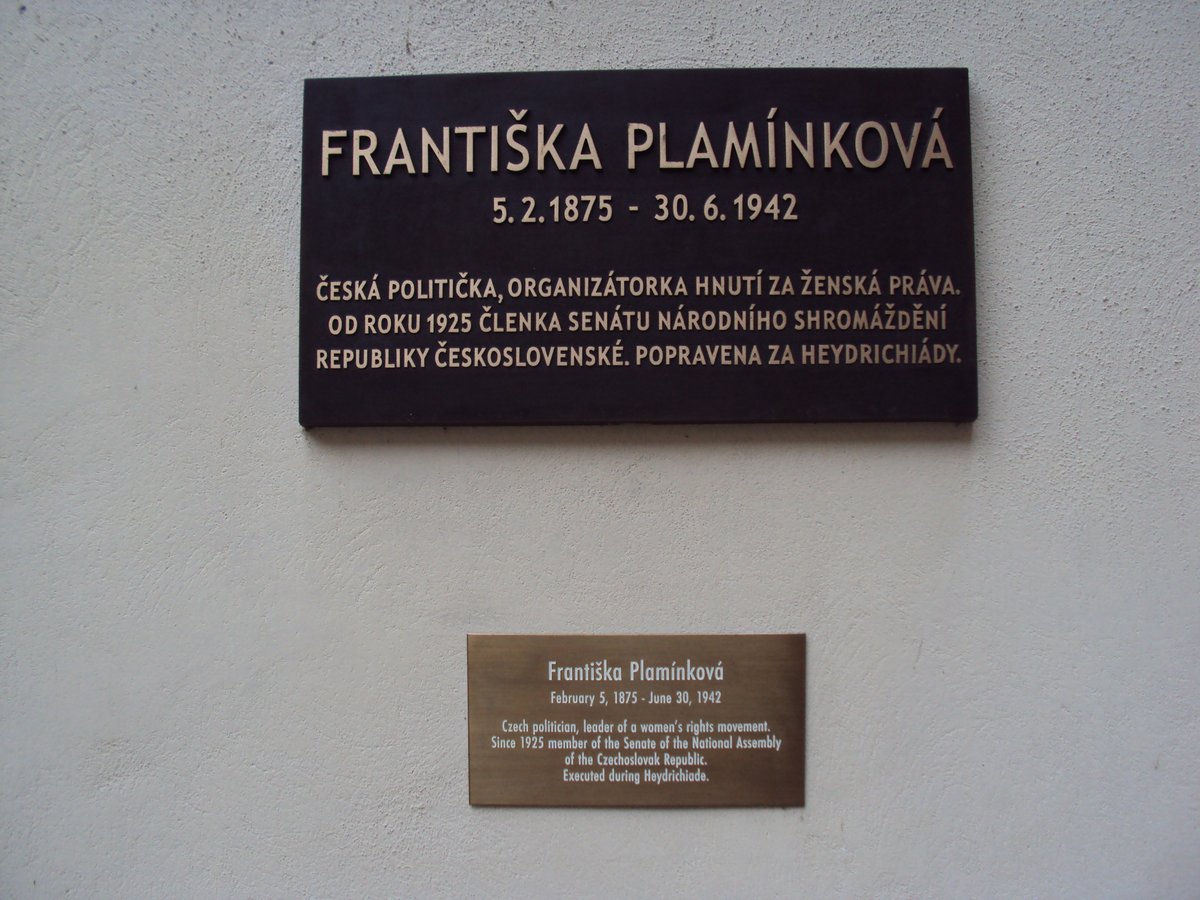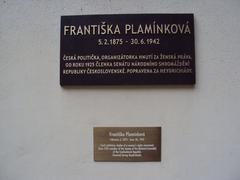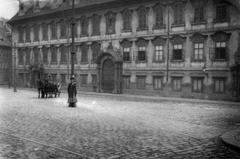
Wallenstein Palace Visiting Hours, Tickets & Historical Guide – Prague
Updated: 14/06/2025
Introduction: The Magnificence of Wallenstein Palace
Wallenstein Palace (Valdštejnský palác), set in Prague’s Malá Strana district, is a standout example of early Baroque architecture and a monument to European history. Built between 1624 and 1630 on the initiative of Albrecht von Wallenstein—a military leader during the Thirty Years’ War—the palace was conceived to rival the majesty of Prague Castle. Its lavish interiors, frescoes, and formal gardens showcase a blend of Italian Baroque and local Renaissance influences, while its present function as the seat of the Czech Senate connects centuries of Czech heritage to modern governance. This guide equips you with everything you need for an enriching visit, including opening hours, ticket details, access tips, and historical background (prague.fm; spottinghistory.com; senat.cz).
Table of Contents
- The Origins and Vision of Wallenstein Palace
- Albrecht von Wallenstein: The Patron
- Architectural and Artistic Highlights
- The Baroque Gardens
- Visiting Hours & Ticket Information
- Location and Access
- Accessibility and Facilities
- Events and Cultural Activities
- Nearby Attractions
- Frequently Asked Questions (FAQ)
- Visuals and Media
- Sources and Further Reading
1. The Origins and Vision of Wallenstein Palace
Construction of the palace began in 1624, commissioned by Albrecht von Wallenstein, one of the most influential figures of his era. Wallenstein aimed to build a residence that would stand as a symbol of his power and ambition, directly competing with Prague Castle for grandeur. Realizing his vision required purchasing dozens of houses, gardens, and even the city’s brick kiln, fundamentally transforming the Malá Strana neighborhood (prague.fm; spottinghistory.com).
2. Albrecht von Wallenstein: The Patron
Albrecht von Wallenstein (1583–1634) rose from minor nobility to become a pivotal figure in the Thirty Years’ War, serving as Imperial Commander-in-Chief. His ambition and independent diplomacy led to suspicion at the imperial court, and he was assassinated in 1634. The palace was occupied by Wallenstein for only about a year and remained in his family’s possession until the mid-20th century (spottinghistory.com).
3. Architectural and Artistic Highlights
Baroque Innovation and Italian Influence
Wallenstein Palace introduced monumental Baroque architecture to Prague. Italian architects Andrea Spezza and Giovanni Pieroni led its design, blending Italian symmetry and ornamentation with local Renaissance and Mannerist details. The main wing, stretching 60 meters along Valdštejnské náměstí, features portals and dormer windows typical of late Renaissance and Nordic Mannerism (spottinghistory.com).
Notable Interiors
- Main Hall (Knights’ Hall): A two-story, 288-square-meter ceremonial space featuring a dramatic ceiling fresco by Baccio del Bianco, depicting Wallenstein as Mars, god of war.
- Palace Chapel: The first Baroque chapel in Prague, adorned with frescoes of St. Wenceslas’s legend.
- Sala Terrena: An open, richly decorated loggia facing the garden, with frescoes illustrating the Argonauts and the Golden Fleece in reference to Wallenstein’s chivalric honors.
- Mirror Hall, Audience Hall, Corridors: Each space is decorated with mythological and astronomical motifs, Venetian mirrors, and stuccoes by Italian masters.
Riding School
The former riding hall now hosts exhibitions organized by the National Gallery of Prague.
4. The Baroque Gardens
The palace gardens were designed in parallel with the main building and remain one of the finest examples of Mannerist landscaping in Central Europe. Highlights include:
- Bronze Statues: Replicas of Adriaen de Vries’s works (originals are in Sweden).
- Ornamental Pond: Home to carp, ducks, and peacocks.
- Sala Terrena: Used for summer concerts.
- Artificial Grotto: A fanciful dripstone wall with hidden figures and aviaries.
- French-style Parterres: Symmetrical lawns, flower beds, and four ornate fountains (prague-now.com).
5. Visiting Hours & Ticket Information
Wallenstein Gardens
- Open: April to October, daily (typically 7:30 am – 5:30 pm; hours may vary seasonally).
- Admission: Free (prague-now.com).
Palace Interiors
- Open: Weekends only, April to October, 10:00 am – 4:00 pm (prague.net).
- Admission: Free; self-guided tours with bilingual descriptions.
Riding School (Valdštejnská jízdárna)
- Open: During temporary exhibitions; ticket prices vary by event.
Note: Hours and access may occasionally change for official Senate events. Always check the official Senate website before your visit.
6. Location and Access
Address: Valdštejnské náměstí 4, 118 01 Malá Strana, Prague
- Metro: Line A (Malostranská station)
- Tram: Lines 12, 15, 20, 22, and 23 (Malostranská stop)
- Walking: Short stroll from Charles Bridge and Prague Castle
7. Accessibility and Facilities
- Wheelchair Access: Gardens and main halls are mostly accessible; some historic interiors have steps or uneven surfaces.
- Restrooms: Paid toilets near the grotto.
- Seating: Benches throughout the gardens.
- Refreshments: No cafés inside the palace; dining options are abundant in nearby Malá Strana.
- Family & Group Visits: Gardens are child-friendly; groups should notify in advance for special arrangements.
8. Events and Cultural Activities
- Concerts: Free classical music performances take place in the Sala Terrena and gardens during summer (viewfromprague.com).
- Art Exhibitions: Hosted in the Riding School.
- Public Programs: Outdoor exhibitions, guided tours, and lectures are held throughout the year, especially on national holidays.
9. Nearby Attractions
Enhance your visit with these nearby historical sites:
- Prague Castle: Iconic hilltop fortress
- Charles Bridge: Medieval stone bridge connecting Malá Strana to Old Town
- St. Nicholas Church: Baroque church in Malá Strana
- Lennon Wall: Famous graffiti site
- National Pedagogical Museum (prague-now.com)
10. Frequently Asked Questions (FAQ)
Q: What are the palace and garden opening hours?
A: Gardens are open daily April–October, typically 7:30 am–5:30 pm. Interiors are open weekends from 10:00 am–4:00 pm.
Q: Is admission free?
A: Yes, for both gardens and palace interiors. Only the Riding School exhibitions require tickets.
Q: Is Wallenstein Palace wheelchair accessible?
A: Gardens and some public areas are accessible; some sections may be challenging due to steps or gravel.
Q: Are guided tours available?
A: Occasional guided tours are offered on special occasions; most visits are self-guided.
Q: Are pets allowed?
A: No pets are allowed in the gardens or palace grounds.
Q: Can I take photos?
A: Non-flash photography is generally permitted; restrictions apply inside during exhibitions.
11. Visuals and Media
12. Sources and Further Reading
- Wallenstein Palace Prague: Visiting Hours, Tickets & Historical Guide (prague.fm)
- Wallenstein Palace Historical Overview (spottinghistory.com)
- Official Senate of the Czech Republic Website (senat.cz)
- Wallenstein Palace Visitor Information (prague-now.com)
- View from Prague
- Prague.net
Summary and Visitor Recommendations
Wallenstein Palace is a must-see for anyone interested in Prague’s Baroque heritage, political history, and garden artistry. Its grand halls, ornate gardens, and central location make it easy to combine with other major attractions. For a complete experience, check the official website for opening hours and events, consider guided audio tours via the Audiala app, and explore cultural exhibitions in the Riding School. Plan your trip during spring or early autumn to enjoy the gardens at their best and catch one of the many free concerts or public events.
Plan ahead, enjoy responsibly, and immerse yourself in one of Prague’s most remarkable historic sites.
























































































































































































